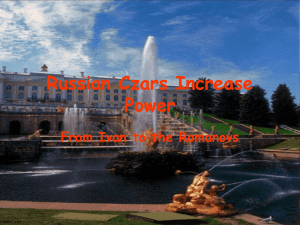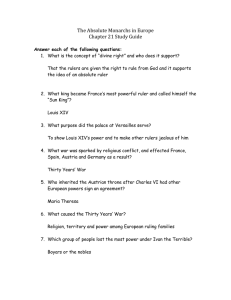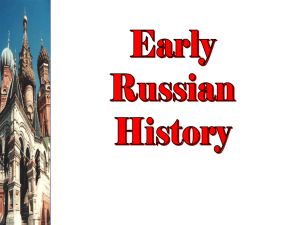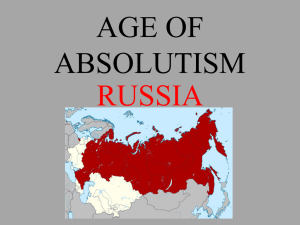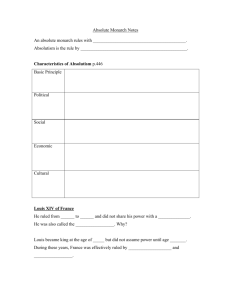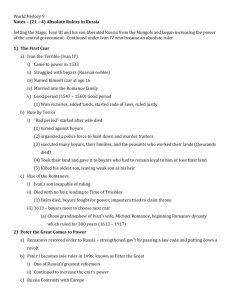Russian Absolutism – From Ivan the Terrible to
advertisement
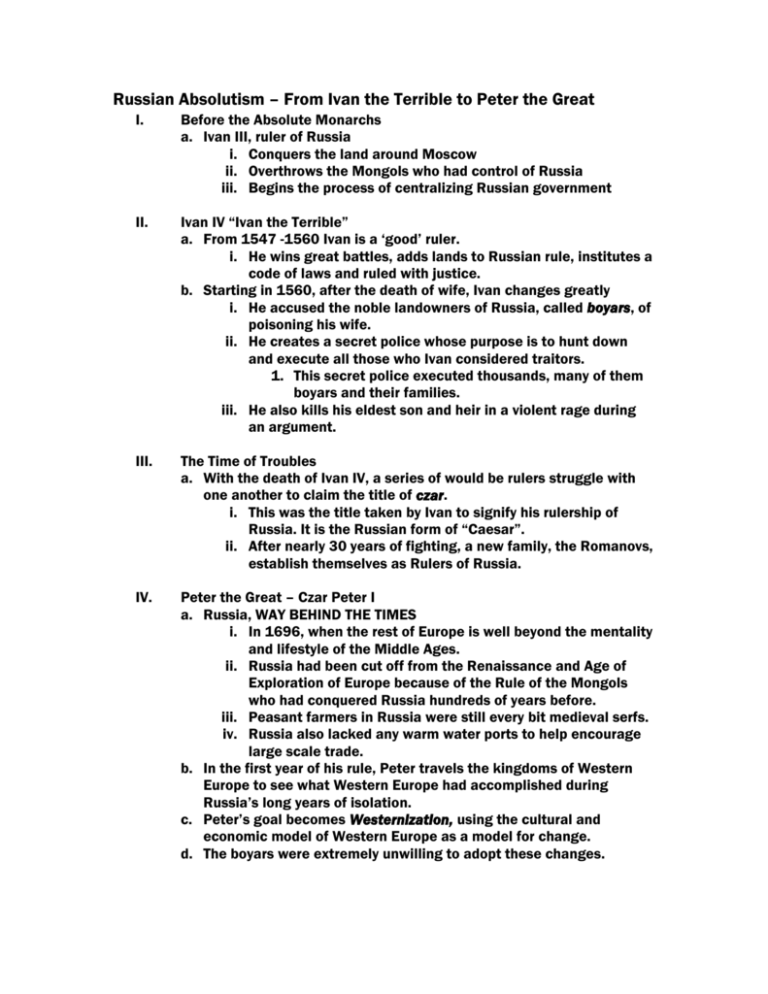
Russian Absolutism – From Ivan the Terrible to Peter the Great I. Before the Absolute Monarchs a. Ivan III, ruler of Russia i. Conquers the land around Moscow ii. Overthrows the Mongols who had control of Russia iii. Begins the process of centralizing Russian government II. Ivan IV “Ivan the Terrible” a. From 1547 -1560 Ivan is a ‘good’ ruler. i. He wins great battles, adds lands to Russian rule, institutes a code of laws and ruled with justice. b. Starting in 1560, after the death of wife, Ivan changes greatly i. He accused the noble landowners of Russia, called boyars, of poisoning his wife. ii. He creates a secret police whose purpose is to hunt down and execute all those who Ivan considered traitors. 1. This secret police executed thousands, many of them boyars and their families. iii. He also kills his eldest son and heir in a violent rage during an argument. III. The Time of Troubles a. With the death of Ivan IV, a series of would be rulers struggle with one another to claim the title of czar. i. This was the title taken by Ivan to signify his rulership of Russia. It is the Russian form of “Caesar”. ii. After nearly 30 years of fighting, a new family, the Romanovs, establish themselves as Rulers of Russia. IV. Peter the Great – Czar Peter I a. Russia, WAY BEHIND THE TIMES i. In 1696, when the rest of Europe is well beyond the mentality and lifestyle of the Middle Ages. ii. Russia had been cut off from the Renaissance and Age of Exploration of Europe because of the Rule of the Mongols who had conquered Russia hundreds of years before. iii. Peasant farmers in Russia were still every bit medieval serfs. iv. Russia also lacked any warm water ports to help encourage large scale trade. b. In the first year of his rule, Peter travels the kingdoms of Western Europe to see what Western Europe had accomplished during Russia’s long years of isolation. c. Peter’s goal becomes Westernization, using the cultural and economic model of Western Europe as a model for change. d. The boyars were extremely unwilling to adopt these changes. V. i. In order to force these changes that Peter felt were necessary upon his country; he took steps to increase his rule as an absolute monarch. e. Like Louis in France, he hired men from lower ranking families than the great and powerful landowners. f. He also creates a standing army, led by hired Western European officers. g. In addition, Peter i. Introduced potatoes, which become a staple. ii. Started Russia’s first newspaper iii. Raised the status of women by allowing them to attend social gatherings. iv. Ordered nobles to give up their traditional clothes for Western European styles. They also had to shave. v. Opened a school for navigation and introduced schools for the arts and sciences. St. Petersburg a. Peter desperately wanted a warm water port. b. To get one, he went to war with Sweden for a piece of the Baltic Sea. c. Though it took the lives of many serfs who were forced to engage in the labor, Peter built the city of St. Petersburg on the site of the land he had won which would become a major trading port and led to the modernization of Russia.
